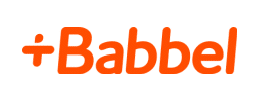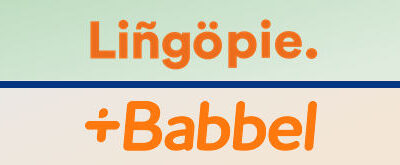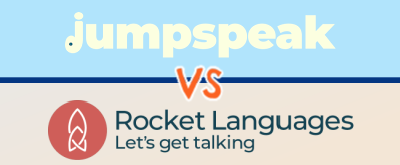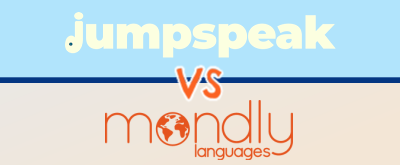When it comes to learning a new language, both Mango Languages and Babbel offer unique features and approaches to help users reach their goals. This article will explore the strengths and differences of each platform, helping you decide which app might be the best fit for your learning style and language goals.
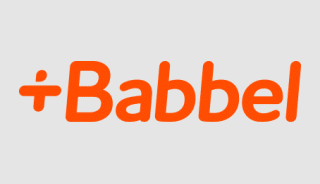
Sale: 55% OFF
Applied in Cart
|
$8-$15/mo |
Great language learning app for beginners and those on a budget. Babbel’s lessons are quick, engaging and effective. |

SALE: 10% Off
Applied In Cart
|
$12-$20/mo |
Unique language learning app with several helpful features and tools, though overall, their program overall is not as effective as Babbel’s. |
Video Review: Mango or Babbel?
In this video, team member Bianca compares and contrasts the language learning programs from Babbel and Mango Languages.
Editor’s Choice
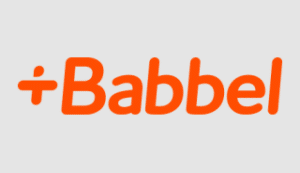
Babbel
- Multiple Subscription Options
- Money Back Guarantee
Pros
- More affordable than Mango Languages
- Comprehensive curriculum that covers all aspects of language learning
- Quick, engaging lesson format
- Impressive speech recognition technology
- Diverse mix of practice drills and exercises
Cons
- Lessons do not include any use of video
- Wish Babbel offered simulated conversations
Reasons To Choose Babbel Over Mango Languages
To kick this comparison off, let’s discuss the major strengths of the Babbel program in relation to Mango Languages.
Diverse Lesson Format
One of the standout aspects of Babbel for our team is the variety within its lessons. While Mango’s consistent, straightforward structure has its appeal, Babbel’s approach feels more dynamic and engaging. Instead of repeating just a few types of drills, Babbel incorporates a wide range of activities, including matching pairs, flashcards, speaking and listening exercises, simulated dialogues, reading, and fill-in-the-blank tasks.
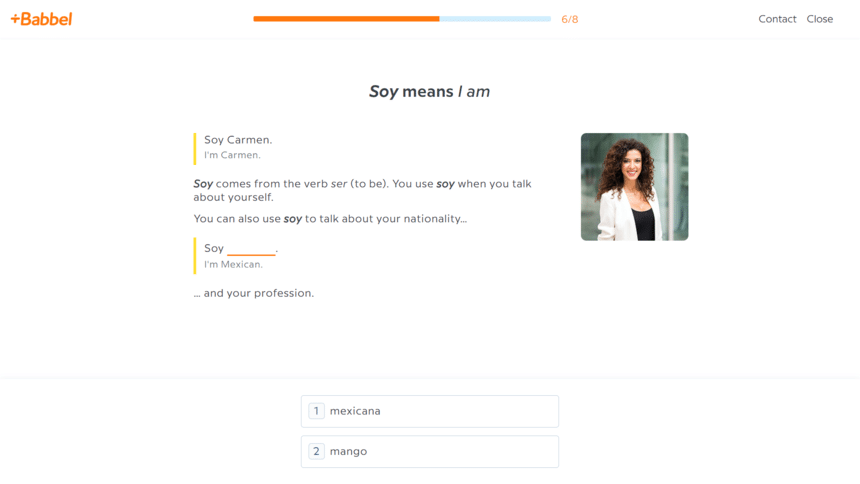
With Babbel, you might go from a speaking exercise to a flashcard drill, then to matching pairs and a dialogue, making the lessons feel quick and effective for memory retention.
Additionally, we appreciate the visuals that Babbel integrates throughout its exercises, which Mango lacks, as they can be a huge benefit for visual learners.
Babbel Is More Affordable
Babbel offers several subscription options, ranging from approximately $8 to $15 per month, depending on the length of commitment. Alternatively, they also provide a lifetime subscription for a one-time payment of around $200-300, granting access to all languages.
Mango Languages keeps it simpler with two main plans: a single-language plan and an “all languages” plan, which includes access to all 70 languages they offer. The single-language plan costs $12 per month , while the all-language plan is around $20 per month.
As such, you can expect to save around $4-$12 per month by going with Babbel. Plus, Babbel tends to offer more frequent discounts, which may make it even more affordable option depending on current promotions.
Flexible Review Sessions
Another benefit of Babbel is its daily review sessions. Each time you log into the app, Babbel prompts you with a quick 2-3 minute review of vocabulary learned in previous lessons to reinforce memory retention (similar to Duolingo).
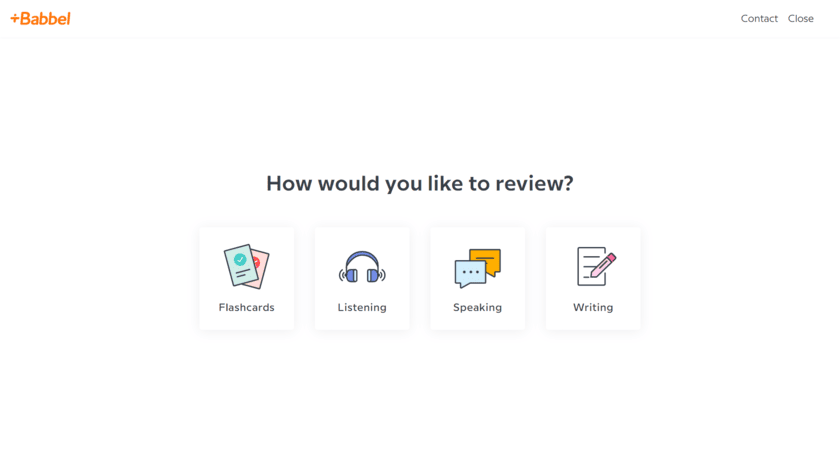
We are big fans of this spaced repetition method as it strengthens recall over time, helping to shift new words from short-term to long-term memory—an essential step in language acquisition.
Additionally, Babbel lets you choose your preferred review style, whether it’s flashcards, listening, speaking, or writing, which adds flexibility to the process. Although Mango Languages also includes a review feature, we find Babbel’s approach more engaging.
Insightful Grammar Instruction
Another advantage Babbel has is its structured approach to teaching grammar. As mentioned earlier, the two platforms take quite different paths with grammar instruction.
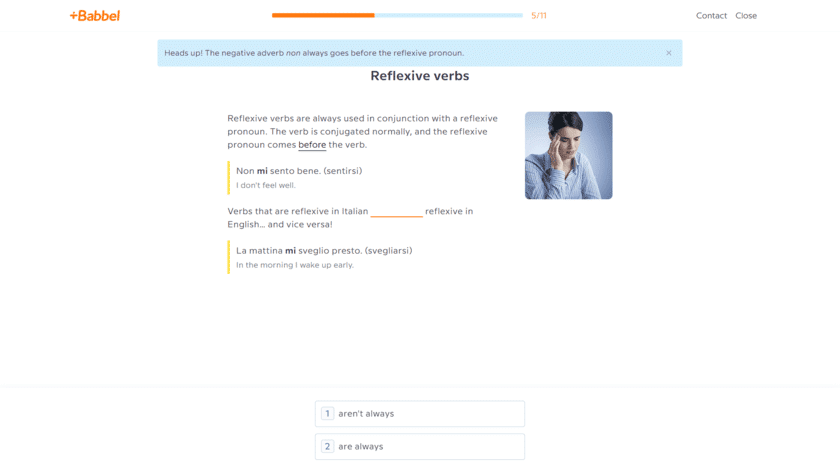
Mango focuses primarily on vocabulary and phrases, offering only brief grammar tips within each lesson. While these tips are helpful, Babbel takes it a step further by dedicating entire lessons to grammar and incorporating helpful grammar notes throughout other lessons with clear callout boxes (somewhat similar to Rocket Languages).
In our view, Babbel’s thorough approach makes it an effective and efficient way to grasp grammar concepts.
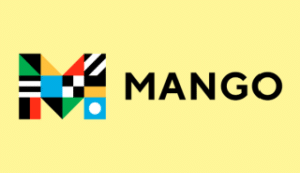
Mango Languages
- 70+ Languages
- Free Trial
Pros
- Easy, fast-moving lessons
- Unique speech tool to help you hone your pronunciation
- Color coded exercises help teach sentence structuring
- More language courses than Babbel
Cons
- More expensive than Babbel
- Program overall not as comprehensive as Babbel’s
- Limited grammar instruction
- Limited use of graphics and images
- Speaking drills and exercises are basic
Reasons To Choose Mango Languages Over Babbel
Now that we’ve discusses the pros of using Babbel to learn a new language, let’s turn the tables and discuss the strengths of the Mango Languages program.
Unique Voice Analysis Tool
One standout feature of Mango’s lessons is their voice analysis tool, which is particularly useful. It lets you record your voice for any speaking exercise, then provides a visual representation of your tone and inflection. You can overlay your recording’s readout with that of a native speaker to easily spot differences.
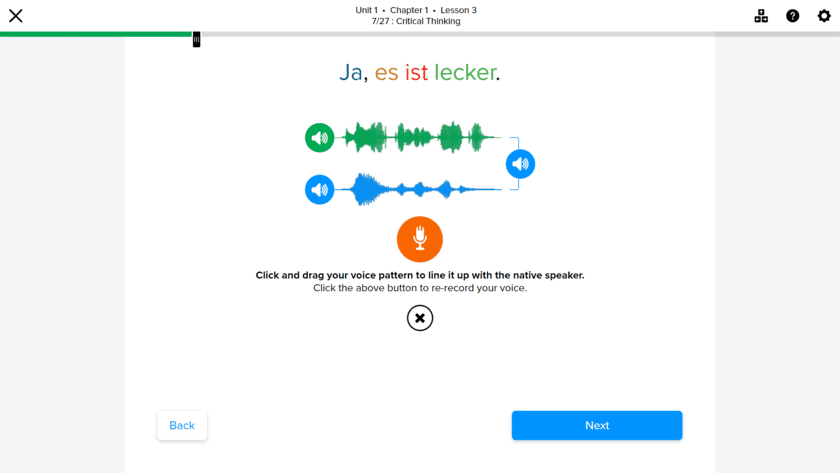
This visual feedback highlights where you may not be hitting the correct inflection points or are extending tones too long, which is especially valuable for visual learners aiming to refine their pronunciation.
Insightful Translation Tool
Another great feature of Mango Languages is its ability to toggle between literal translations and commonly understood meanings. As you dive into a new language, you’ll often find that phrases and expressions don’t translate directly. Instead, there are usually culturally familiar ways of expressing ideas that differ from a direct, word-for-word translation.
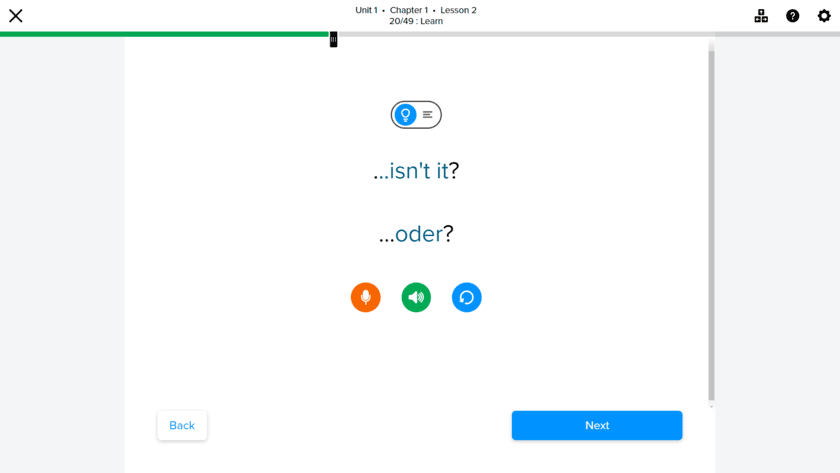
Mango Languages addresses this by providing a handy toggle that lets you switch between the everyday, natural phrasing and the literal English translation. Personally, I found this feature extremely helpful for grasping common phrases and understanding their true meanings in context.
More Language Courses
To begin, it’s worth mentioning that Babbel’s course selection is limited to just 14 languages. Mango Languages, on the other hand, supports learning for over 70 languages, including unique specialty courses like Argot French, Oktoberfest German, and Medical Spanish.
So, if you’re interested in studying a less common language or exploring a particular niche in your target language, Mango might be the more suitable choice (you can also check out Rosetta Stone).
Verdict: Which Language App Should You Choose?
After thoroughly testing each program, our team found Babbel to be the stronger choice. Mango Languages has some great features, like its color-coded sentence structure, pronunciation analysis tool, and quick lessons. However, we found Babbel to be overall more engaging and effective.
Babbel’s lessons offer more variety, its vocabulary review system is more robust, and the images and visuals in the exercises are extremely useful. Additionally, Babbel places a stronger focus on grammar, which we found beneficial. Ultimately, if we had to choose between the two, we would recommend Babbel.
While both apps have unique strengths, Babbel stands out for its diverse lesson structure, effective vocabulary review, and strong emphasis on grammar. For those seeking a more engaging and comprehensive experience, Babbel is the better choice.
Mango Languages offers a broader selection of languages, including specialty courses, and uses a color-coded system to teach sentence structure. Babbel, however, focuses on in-depth grammar, varied lesson formats, and robust vocabulary review, making it a more comprehensive option for language learners.

